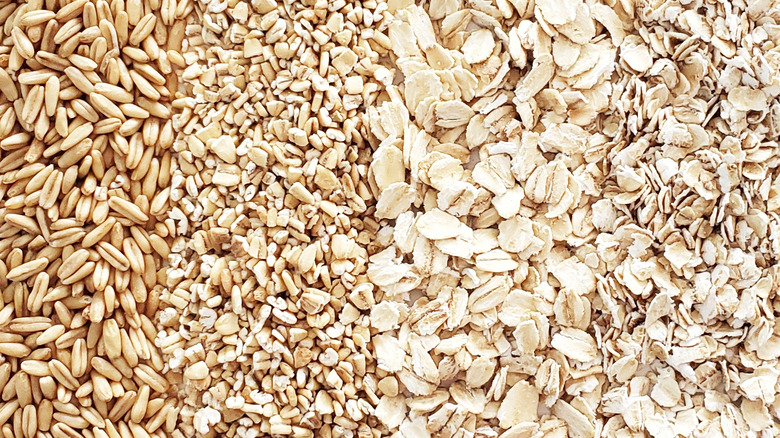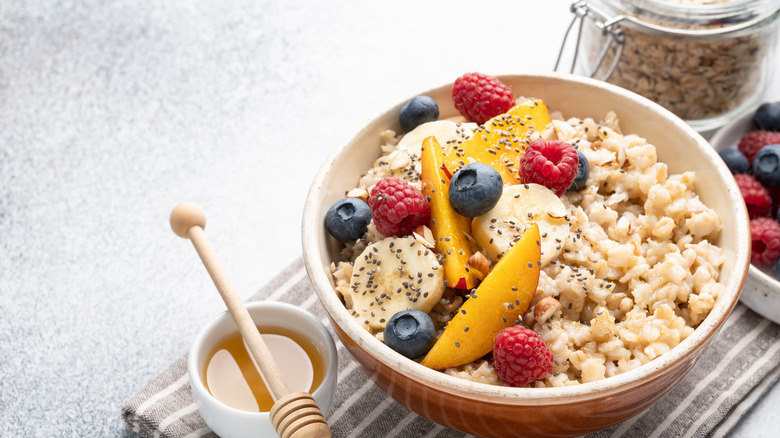Old Fashioned Oats Vs. Steel-Cut: Is There A Nutritional Difference?
Oats. The good-fiber-toting, digestion-aiding, super grain that has been debuting its Quaker friend since 1877. Old-fashioned, quick, steel-cut, Scottish, overnight, and instant oats have been gracing breakfast tables for centuries. Not only are oats affordably filling, they're really good for you. In 1997 they were the first food item that the FDA granted the right to claim a health benefit on their packaging, via Health Harvard. Those are bragging rights! That leaves only one question. Is there a nutritional difference between old-fashioned rolled oats and the steel-cut variety?
Old-fashioned rolled oats were only introduced in the early 1900s by the Quaker company, via Forgottonia. When the Nagel brothers discovered how to separate the oat grain from its hull by rolling it flat, the breakfast industry was forever changed. What once was used as animal feed, the Quaker company quickly marketed as cereal and the rest is history, via Britannica. The nutritional benefits of oats were known at the beginning. Early advertisements by Quaker claim that oats give children "strong bones". Today, we know old-fashioned oats as the fibrous wonder of the breakfast world.
According to Quaker, a ½ cup serving provides 4 grams of fiber, 27 grams of carbohydrates (the complex, healthy kind), and 5 grams of protein.
Old-fashioned and Steel are equally nutritious
If you like the chewy texture and nutty flavor of steel-cut oats better than old fashioned, you're in luck. The health benefits are almost exactly the same. A ¼ cup serving of steel-cut oats has 4 grams of fiber, 30 grams of carbohydrates, and 4 grams of protein, according to McCann's who has been producing steel-cut oats for 150 years. Steel-cut oats aren't rolled like old-fashioned oats. Instead, the whole grain (or groat) is cut with steel blades, giving them a coarse, kernel-esque appearance. Because they are coarser and firmer, they do take a little longer to cook.
While nutritionally there is no real difference between old-fashioned and steel, they are processed differently. Rolled oats are steamed, then flattened as opposed to steel-cut which are only cut. Medical News Today says that this minimal processing increases the health benefits and may make you feel full longer. But the real nutritional difference lies in what you top your tasty oats with, warns All Recipes. To keep your super-grains super healthy and nutritious, stick with fresh fruit, nuts, and other low-sugar, minimally-processed ingredients. This way you can stay as wholesome as the Quaker who convinced you that eating oats was a good idea.

